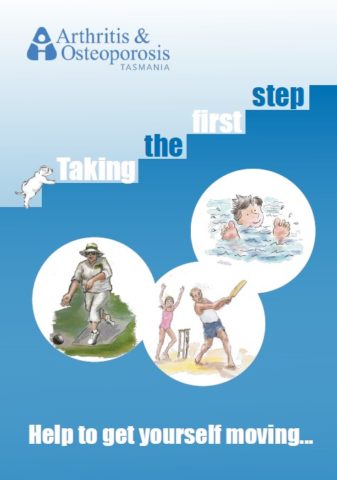Physical activity and exercise is extremely important for managing an arthritis condition. It can improve mobility and flexibility of joints, muscle strength posture, and balance. It can also decrease pain, fatigue (tiredness), muscle tension and stress.
Is physical activity good for arthritis?
Research has found that regular exercise is one of the most effective treatments for arthritis. It can help to:
Improve mobility and flexibility of joints, muscle strength, posture and balance
Decrease pain, fatigue (tiredness), muscle tension and stress
Just as importantly, physical activity will improve your overall health. It can improve the fitness of your heart and lungs, increase bone strength, reduce body weight and reduce the risk of conditions such as diabetes. It also improves your sleep, energy levels and mental well-being.
Exercise is one of the best treatments for arthritis. Talk to your healthcare team before you get started.
Who should exercise?
Everyone with or without arthritis should be doing regular, appropriate exercise. The important thing is to choose the activities that best suit your condition, health and lifestyle.
What types of exercise should I do?
Before you start to exercise it is important to ask your doctor and healthcare team to help you develop a suitable program and choose the best activities for you. Everyone’s fitness level and limitations will be different so start with activities that suit you. While some people with arthritis will find a five kilometre walk comfortable, others may find walking around the block difficult.
Generally you will need to do a mix of:
- flexibility: to maintain or improve the mobility of your joints and muscles. Examples include moving the joint as far as it can, muscle stretches and yoga.
- muscle strengthening: strong muscles help to support and take pressure off sore joints, strengthen bones and improve balance. An example is using weights, resistance bands or gym machines.
- fitness: to improve the health of your heart and lungs. These activities usually use the larger muscles in the body, rather than exercising a specific area, and may make you ‘puff’ a little. An example is brisk walking.
There isn’t just one particular exercise or activity that is recommended for all people with arthritis. Choose an activity that you enjoy and that is convenient for you to do. Low-impact exercises, with less weight or force going through your joints, are usually most comfortable.
Examples of low-impact activities include:
- walking
- exercising in water, such as hydrotherapy (with a physiotherapist), swimming or water exercise classes. For information about our Warm Water Classes, click here. Download the Water Exercise information sheet.
- strength training – for information about our Smoother Movers program, click here. Download the Strength Training information sheet.
- Tai Chi exercise
- yoga and pilates
- cycling
- dancing
How much should I do?
All Australian adults should be aiming to do at least 30 minutes of activity on most days of the week. You can do 30 minutes continuously or combine several shorter sessions. If you have arthritis and you have not exercised for a while, you may need to start with shorter sessions then build slowly. Talk to a physiotherapist or exercise physiologist about getting started to help you avoid an injury or over-doing it. Don’t forget that activities such as gardening, playing with pets or taking the stairs rather than the lift can also count as exercise.
How will I know if I’ve done too much?
It can be hard to predict how your body will cope with a new activity. The most important thing to do is to listen to your body. A general guide is the ‘two hour pain rule’ – if you have extra or unusual pain for more than two hours after exercising, you’ve done too much. Next time you exercise, slow down or do less. Talk to your physiotherapist or exercise physiologist if you continue to experience pain after exercising.
Should I exercise through pain?
No. You should stop exercising if it is causing you unusual pain or increases your pain beyond what is normal for you. Exercising through this type of pain may lead to injury or worsening of your arthritis symptoms. (Note, many people with arthritis have some amount of pain all the time. This is not a reason to avoid exercise. You should only stop if you notice extra or unusual pain while you are exercising).
When is the best time to exercise?
It doesn’t matter when you exercise, as long as you do. If possible, try to exercise when:
- you have least pain
- you are least stiff
- you are least tired, and
- your medicines are having the most effect (ask your doctor or pharmacist about how to time your medicines with exercise if possible. This may help to make your exercise session more comfortable).
Safety tips
- Talk to your doctor and/or health professional before starting an exercise program. A physiotherapist or exercise physiologist can suggest safe exercises and make sure you are doing your exercises correctly to prevent an injury.
- You may need more rest and less exercise during a ‘flare’, a period of increased pain and stiffness. Do not vigorously exercise a joint that is red, hot, swollen or painful.
- Always build up slowly. When you first start, do less than you think you will be able to manage. If you cope well, do a little bit more next time and keep building up gradually.
- Always start your exercise with some gentle movements to warm up your body and your joints. This can help prevent pain and injury during exercise.
- Cool down at the end of your session with some gentle movements and stretches. This can help prevent muscle pain and stiffness the next day.
Resources:
For information, practical tips and strategies to help you start safely on a path to moving more, check out our booklet Taking the first step – Help to get yourself moving.
Source and Credit: Arthritis & Osteoporosis Tasmania
